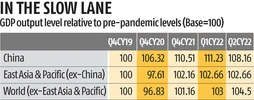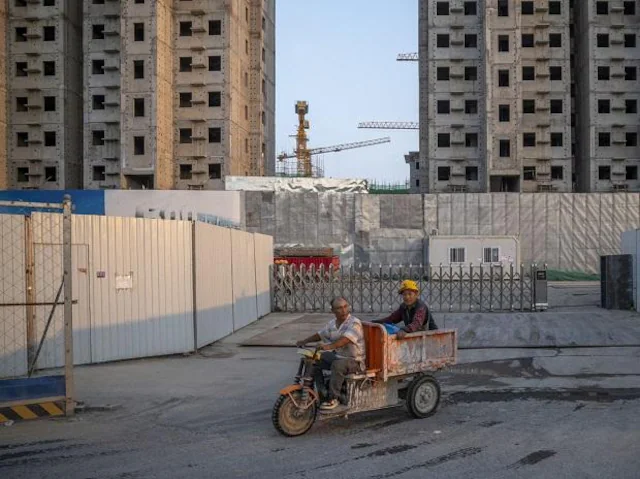For the first time since 1990, China will lag behind the rest of Asia in economic growth. According to the World Bank’s forecast, this is primarily due to Xi Jinping’s zero-Covid policy and the crisis in the property sector, as reported by Financial Times (FT).
The World Bank downgraded the GDP growth forecast for China to 2.8 per cent. In April, the bank had estimated China’s growth rate to be between 4-5 per cent. In 2021-22, the second-largest economy grew by 8.1 per cent.
As China’s growth projections are downgraded, rating agencies have increased the growth projections for Asia (excluding China). The region is expected to grow 5.3 per cent in 2022-23 on the back of a rebound in domestic consumption. Last year, it grew at 2.6 per cent.

The Chinese government has also lowered its growth projection to 5.5 per cent for FY22. According to FT, the outlook has deteriorated considerably in the last six months.
The zero-Covid policy has restricted mobility and consumer activity in China. The country’s property sector, which accounts for about 30 per cent of the total GDP, has also been shaky for the last couple of years. Big property developers like Evergrande have defaulted on their debt repayments and have failed to meet their commitments to homebuyers.
The expectations that Xi will keep the strict lockdowns across the countries beyond 2022 have also pushed other agencies like Nomura and Goldman Sachs to slash their outlook on the country’s growth.

The World Bank also said that the government needs to provide more liquidity support to the property sector to deliver projects on time. They added that the crisis represents a “deeper” problem.
On the other hand, other countries in Asia have been seeing their growth rates improve. India, Indonesia, Vietnam, and the Philippines have lifted the lockdown restrictions, and consumer demand has risen.
Central banks in these countries have started to raise their interest rates. The Chinese central bank, however, slashed its key interest rate to 3.65 per cent in August from 3.7 per cent earlier.

